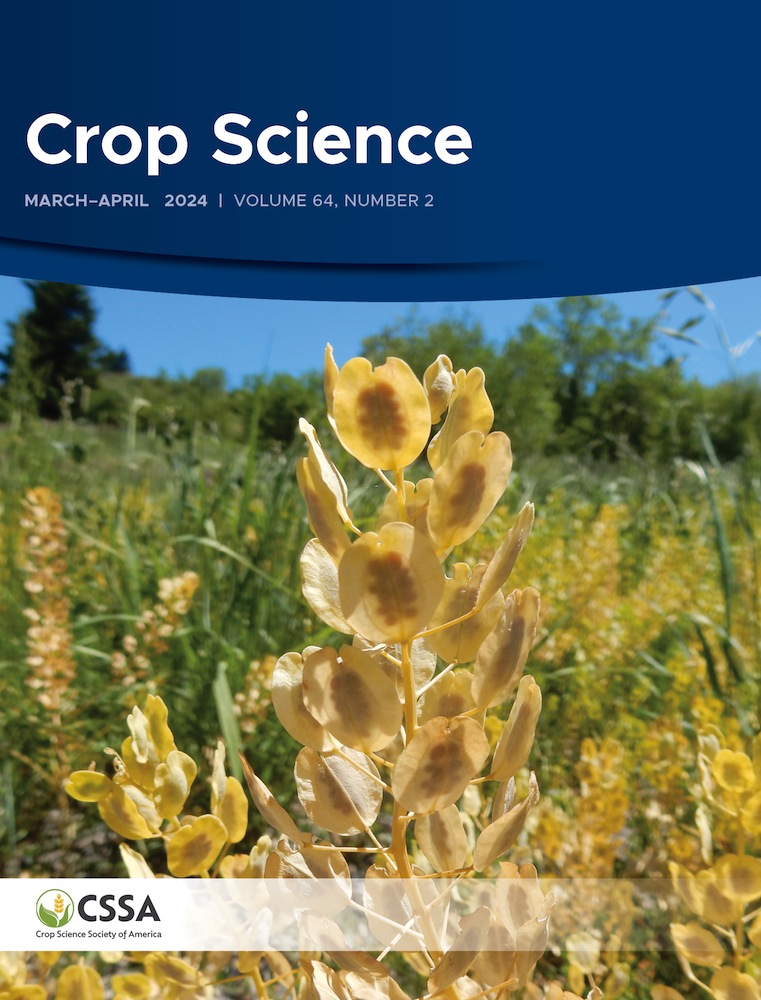Ver ítem
- xmlui.general.dspace_homeCentros Regionales y EEAsCentro Regional Tucumán - Santiago del EsteroEEA Santiago del EsteroArtículos científicosxmlui.ArtifactBrowser.ItemViewer.trail
- Inicio
- Centros Regionales y EEAs
- Centro Regional Tucumán - Santiago del Estero
- EEA Santiago del Estero
- Artículos científicos
- Ver ítem
A comparison of procedures for evaluating and selecting alfalfa landrace germplasm for tolerance to salinity
Resumen
In arid and semiarid regions, salinity may affect alfalfa (Medicago sativa) productivity and survival due to either cultivation on salt-affected soils or the use of salinized irrigation water. Exploiting germplasm evolved under salt-stress conditions offers opportunities for crop tolerance improvement. In the first phase of the current study, four reportedly salt-tolerant landraces originated from stress-prone areas of West Asia or North Africa and two
[ver mas...]
In arid and semiarid regions, salinity may affect alfalfa (Medicago sativa) productivity and survival due to either cultivation on salt-affected soils or the use of salinized irrigation water. Exploiting germplasm evolved under salt-stress conditions offers opportunities for crop tolerance improvement. In the first phase of the current study, four reportedly salt-tolerant landraces originated from stress-prone areas of West Asia or North Africa and two reference commercial cultivars underwent three evaluation trials according to different methods, namely, seed germination in saline water, in vitro testing of young plants, and greenhouse evaluation of adult plants in Cone-tainers. Experimental populations obtained by intercrossing landrace genotypes selected according to each evaluation method were subsequently evaluated under stressful field conditions in two regions featuring different salt stress type, namely, southern Tunisia (irrigation with saline water) and northwestern Argentina (rainfed cropping in saline soil). Landrace ranking for salt tolerance differed somewhat depending on the evaluation method, and the proportion of selected plants per landrace depended accordingly on the method. In each field experiment, there were two evaluation phases, and the second phase corresponded in both cases to harsher conditions. The in vitro evaluation and selection resulted in potentially more useful selected germplasm than the other evaluation methods. The field experiments highlighted the large specific adaptation effects that affected the response of salt-tolerant germplasm across the two regions.
[Cerrar]

Autor
Pecetti, Luciano;
Tlahig, Samir;
Confalonieri, Massimo;
Cornacchione, Monica;
Hayek, Taoufik;
Prieto Angueira, Salvador;
Annicchiarico, Paolo;
Fuente
Crop Science : 1-15 (First published: 02 May 2024)
Fecha
2024-05
Editorial
Wiley
ISSN
0011-183X
1435-0653
1435-0653
Documentos Relacionados
Formato
pdf
Tipo de documento
artículo
Proyectos
(ver más)
INTA/2019-PE-E6-I142-001, Mejoramiento genético de leguminosas y gramíneas forrajeras para incrementar la productividad y la sustentabilidad de los sistemas agropecuarios de la Argentina
Palabras Claves
Derechos de acceso
Abierto
 Excepto donde se diga explicitamente, este item se publica bajo la siguiente descripción: Creative Commons Attribution-NonCommercial-ShareAlike 2.5 Unported (CC BY-NC-SA 2.5)
Excepto donde se diga explicitamente, este item se publica bajo la siguiente descripción: Creative Commons Attribution-NonCommercial-ShareAlike 2.5 Unported (CC BY-NC-SA 2.5)


